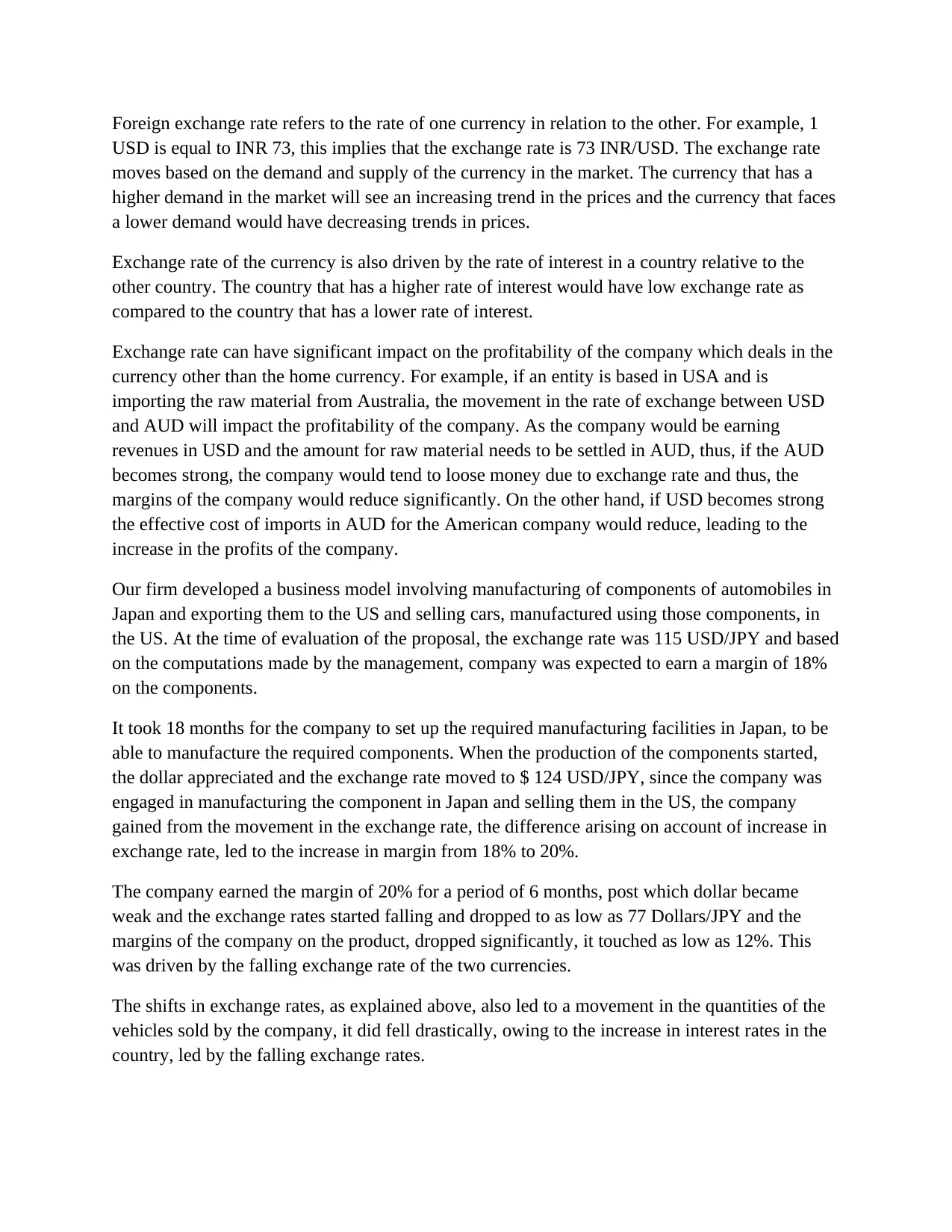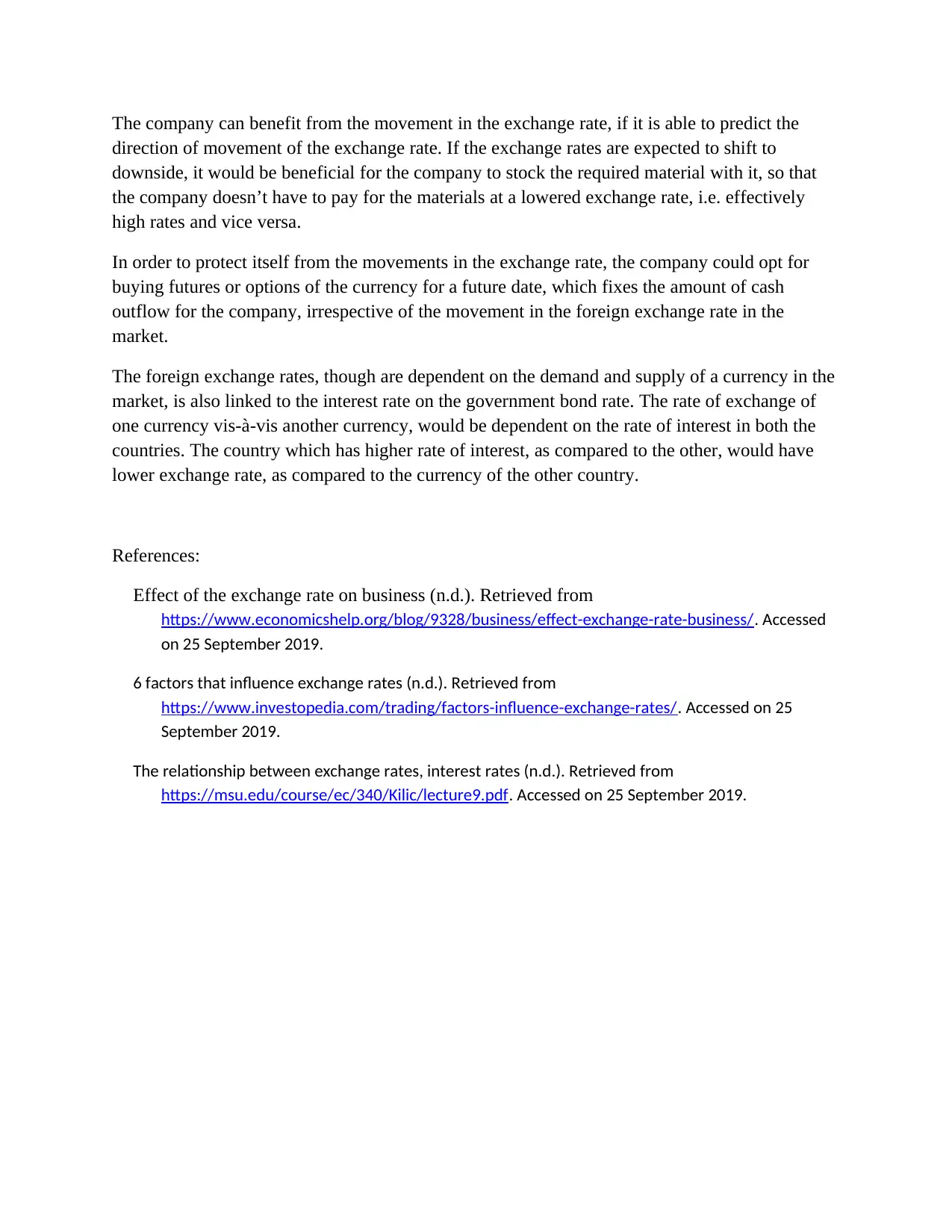Case Study: Exchange Rate Impact on Business Operations and Strategy
VerifiedAdded on 2022/10/11
|2
|867
|106
Case Study
AI Summary
This case study examines the impact of foreign exchange rate fluctuations on a company's profitability and strategic decisions. The analysis begins by defining foreign exchange rates and explaining how they are influenced by market demand, supply, and interest rates. It then presents a business scenario involving a firm that manufactures automobile components in Japan and exports them to the US. The case illustrates how changes in the USD/JPY exchange rate affected the company's margins, initially increasing them due to dollar appreciation and later decreasing them due to dollar depreciation. The study highlights the importance of predicting exchange rate movements and implementing hedging strategies, such as using futures or options, to mitigate financial risks. It also references how changes in interest rates can impact the quantity of vehicles sold. The case concludes by emphasizing the need for businesses to understand and proactively manage their exposure to foreign exchange rate risks.
1 out of 2






![[object Object]](/_next/static/media/star-bottom.7253800d.svg)